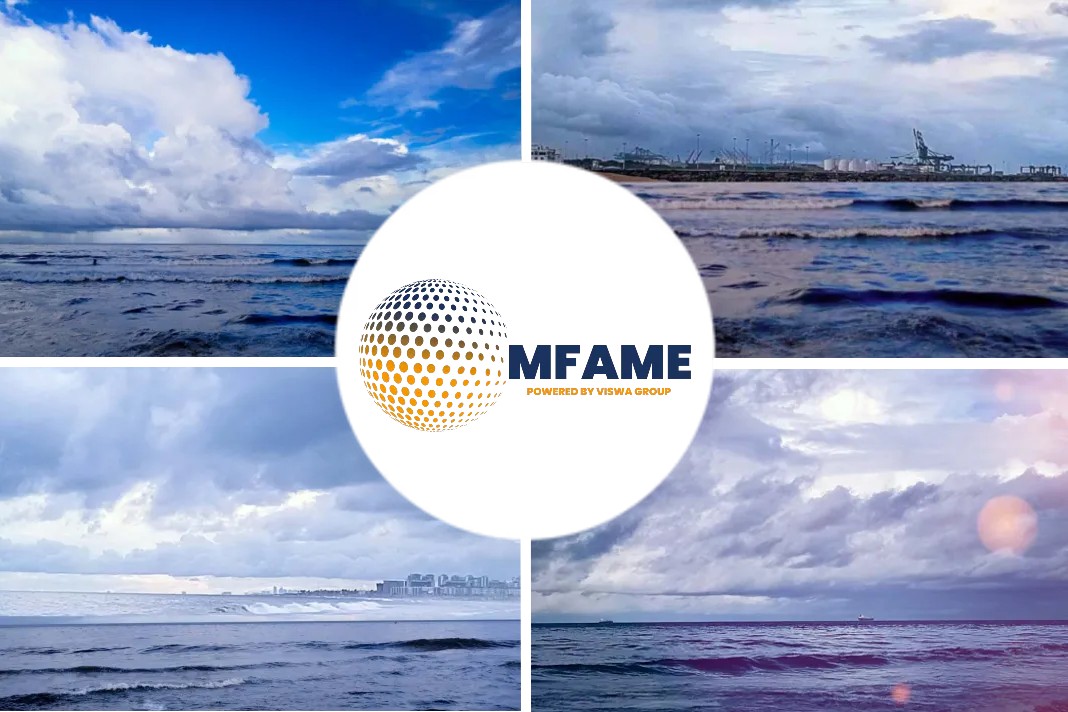The February 2022 delivery of the 318,000 dwt VLCC, Yuan Rui Yang, was a watershed moment for the tanker industry and an iconic moment for China Classification Society (CCS), says an article published in Riviera.
CCS, a pioneer
This is the first VLCC to be powered by LNG and sets a new bar for fuel efficiency, carbon emissions, and operational efficiency. The delivery of Yuan Rui Yang confirms CCS as a pioneer in the VLCC classification field.
The delivery of Yuan Rui Yang comes at a tipping point in ship design, fuel technology and Chinese shipbuilding technology. Yuan Rui Yang was built at Dalian Shipbuilding Industry Company for shipping giant, COSCO Shipping.
Commissioning of the tanker also comes at a critical time in commercial shipping. More vessels capable of operating on alternative fuels, or with hybrid energy systems, are now being contracted than ever before. The pressure is on to develop fuel and engine technologies based on zero-carbon fuels, but the first internal combustion engine designs for ammonia and, later, hydrogen, are still some years away.
Initiatives to improve ship efficiency
The fact that some technologies are still under development has not stopped CCS from investing substantial resources in the marine fuel field. Over the last two years, for example, the classification society has successively completed the research, development, and design assurance of the world’s first LNG dual-fuel VLCC.
It has also undertaken the development and approval-in-principle (AIP) of ammonia-fuelled and methanol-fuelled VLCC designs.
The classification society has also assessed the viability of other technologies; these include trials of sail-assisted propulsion systems and air-lubrication drag-reduction initiatives to improve ship efficiency.
A key component of these ongoing projects is the application of smart systems and intelligent technology to systems for a variety of ship types, but specifically for tankers.
While the development of new low- or zero-carbon fuels continues and analysts assess the capital investment required for the new bunkering infrastructure that will be required globally, there remains the challenge of reducing the carbon footprint of vessels likely to be contracted over the next five years.
LNG as a marine fuel
As the cleanest of hydrocarbon fuels and with availability in a growing number of ports and terminals, LNG offers a sound starting point. The involvement of CCS in the design and assurance of Yuan Rui Yang is therefore very important.
As things stand, LNG as a marine fuel offers immediate, though limited, carbon reduction benefits. Engine designers, meanwhile, are focusing on technologies to reduce methane slip, one significant downside of LNG combustion technology which multiplies greenhouse gas emissions by a substantial factor. However, LNG-powered vessels can already benefit from the use of bio-LNG as a drop-in fuel and a substitute for conventional LNG. Production and availability of bio-LNG, however, remains limited.
Meanwhile, research and development continues on synthetic natural gas (SNG), a product that is not based on fossil fuels or derived from biomass. Instead, it is actually manufactured and, if this process uses renewable energy, it can be a carbon-free substitute for fossil fuels. Its composition enables it to be mixed and interchanged with natural gas in all applications, researchers at CCS report.
Groundbreaking technologies
CCS continues to focus on these ground-breaking fuel technologies, that are essential to global shipping’s emission reduction journey, particularly with new IMO carbon intensity regulations due to enter force in January 2023. The classification society’s close co-operation both with China’s major shipyards and the country’s tanker owners, is facilitating a wide range of innovative projects on potential alternative fuels and, at the right time, the award of respective AiPs.
Speaking at the delivery of the CCS-classed Yuan Rui Yang, the deputy general manager of CCS Dalian Branch, Yang Guang, said that delivery of the tanker represented a significant milestone for CCS and China. Developing vessels which cut carbon emissions is part of the country’s green energy drive across shipping and logistics supply chains and he said that the tanker demonstrates how LNG can be used as a primary fuel.
“Yuan Rui Yang has comprehensive energy-saving and performance indexes,” he declared. “Delivery of the vessel shows CCS’ commitment to clean energy innovation, boosting the use of LNG as the main fuel for large-scale vessels like VLCCs. CCS is determined to continue to provide strong technical support for emission reductions in shipping and shipbuilding.”
Tanker’s hull
An example of this can be found in the tanker’s hull, which has been optimised, and the extra efficiency achieved through hull-engine-propeller matching. The result of these and other design initiatives is an EEDI that is 39.3% lower than the baseline value for VLCCs of this size.
This means that the tanker is already exceeding IMO EEDI Phase III requirements for 2025, when new ships will have to demonstrate a 30% improvement in the index compared with the baseline.
Many of the VLCC’s most notable facets are likely to set new standards in VLCC design and operation. This includes the engine configuration: through detailed CCS assessments, fuel requirements are met by two C-type bunker tanks on deck with a total capacity of 7,000 m3 of LNG, sufficient for a 12,000-nautical mile round trip between the Far East and the Middle East. Adding in conventional fuel on board, Yuan Rui Yang has a theoretical endurance of 24,000 nautical miles.
Three types of combustion engines use LNG for fuel: one WinGD 7X82DF main engine; three Wärtsilä 9L20DF auxiliaries; and two Alfa Laval D-type auxiliary boilers. Flue gas from the boilers is scrubber-washed and supplied as inert gas for the VLCC’s cargo tanks.
Did you subscribe to our daily Newsletter?
It’s Free! Click here to Subscribe
Source: Riviera
















